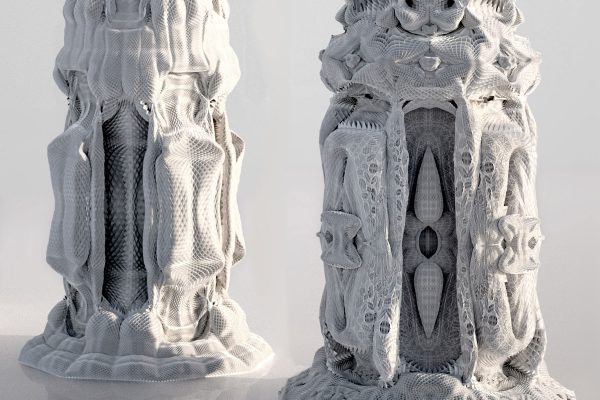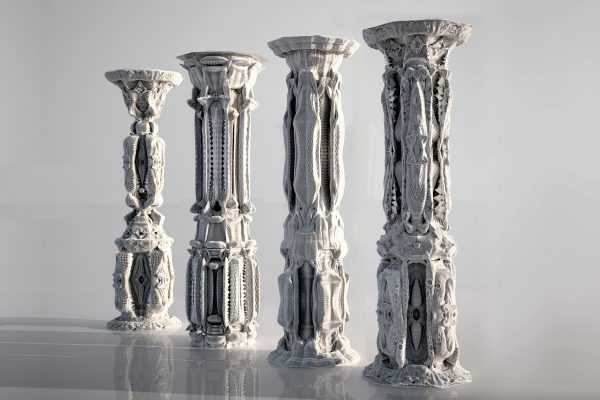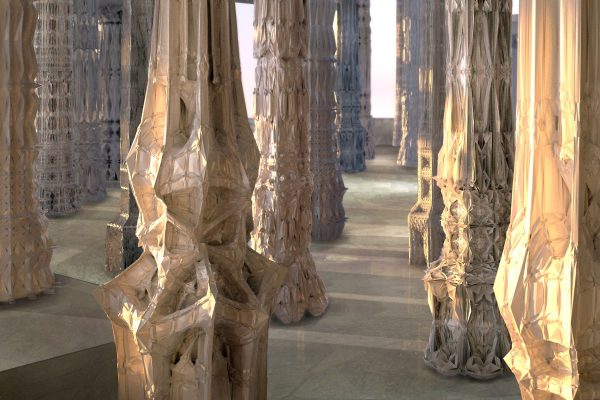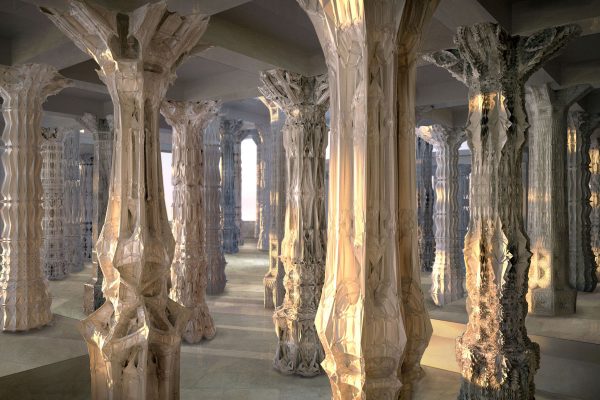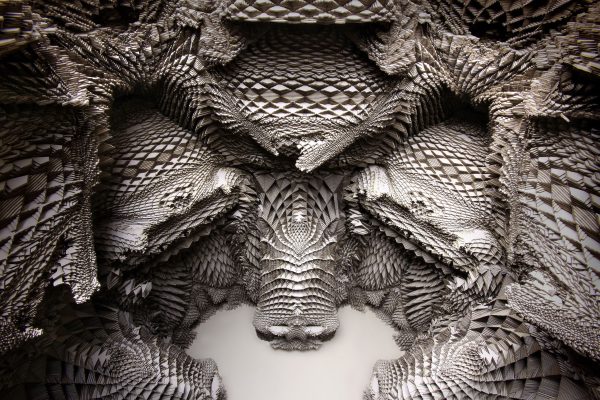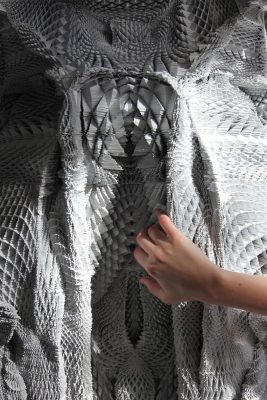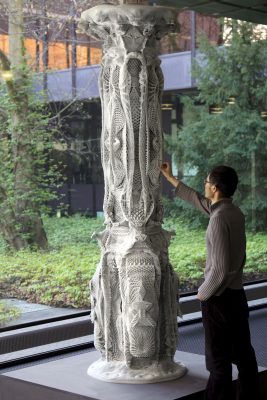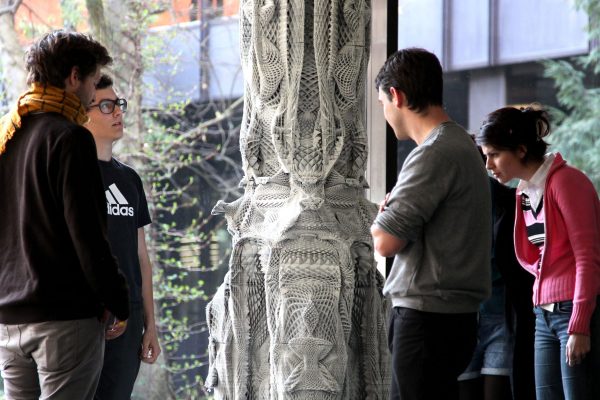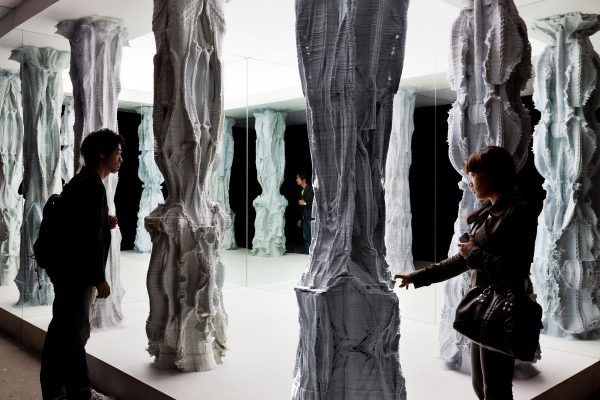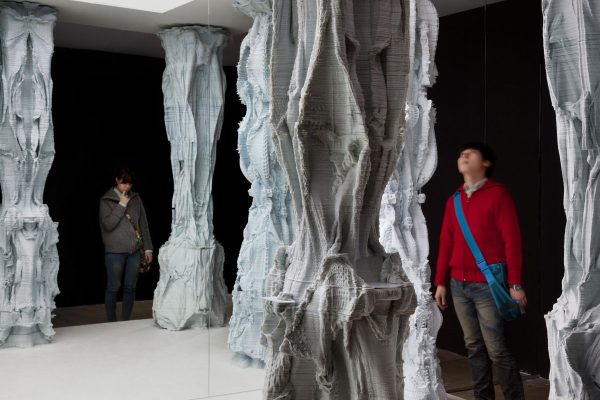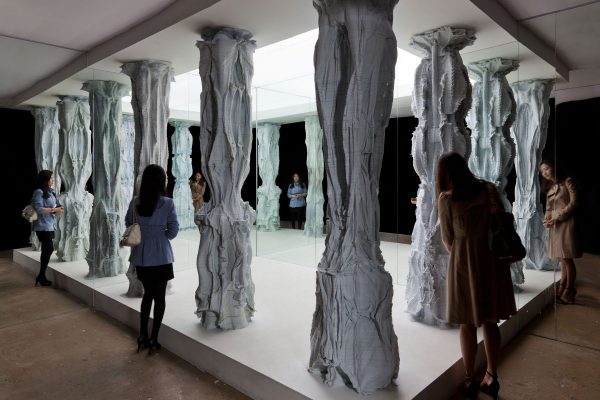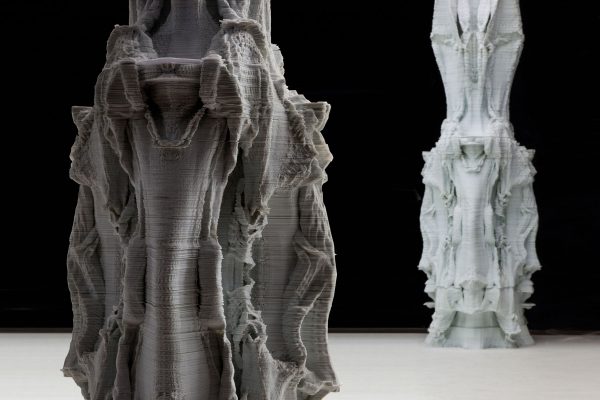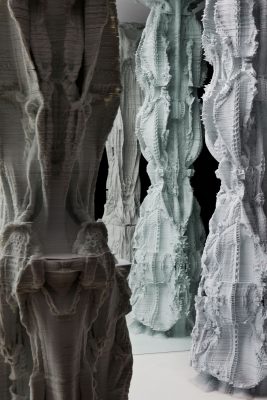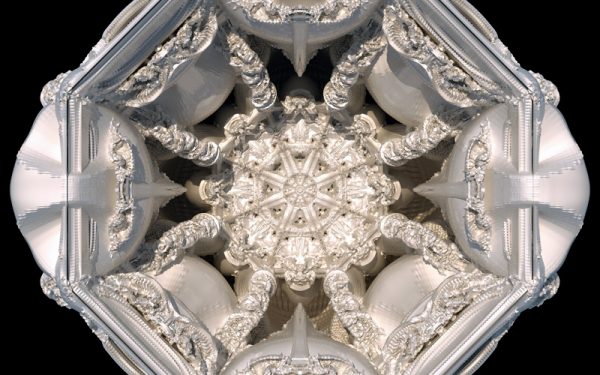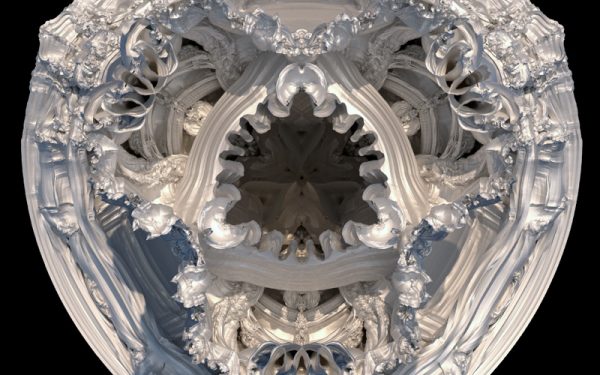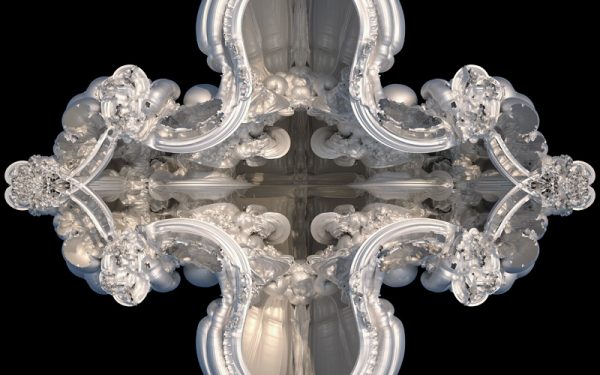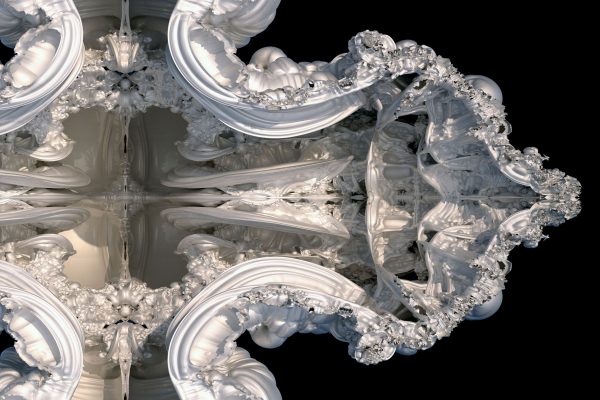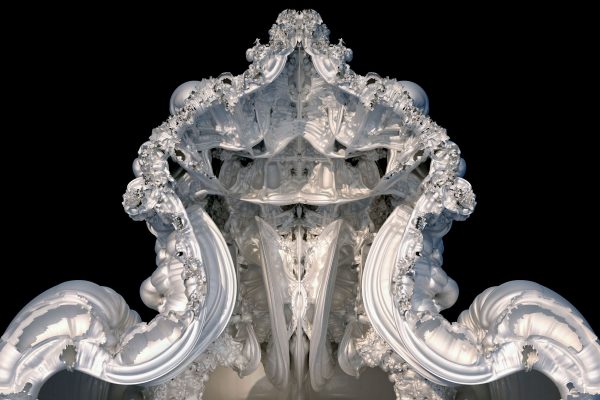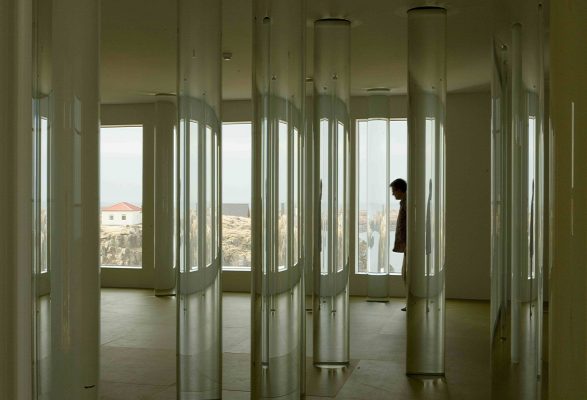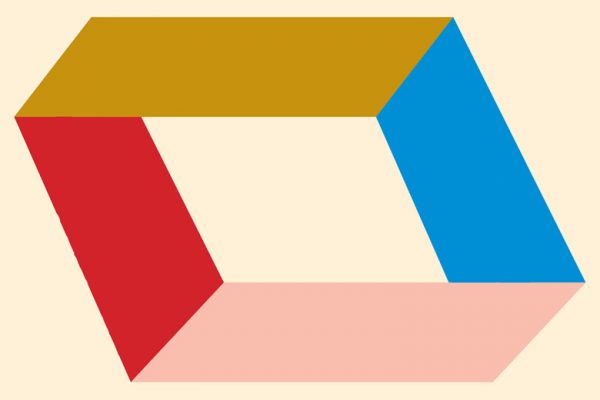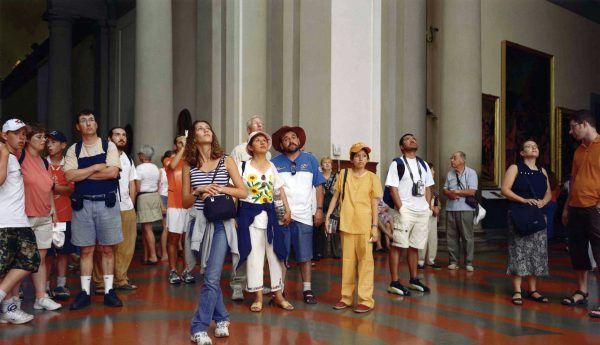Every project made with a computer expresses a relationship between aesthetics and technology. The historical progress of technology works in two dimensions – it allows us to view novel inventions through the lens of existing archetypes, while simultaneously reinvigorating existing art forms with new aesthetic possibilities. It is no accident that the term architecture is used by computer programmers to describe the hierarchical, rule-based logic of code, a world in which the grammar and syntax of a programming language must be obeyed. Most of the time, the inner workings of the computer are explained by analogous artefacts drawn from our pre-digital world; the monitor is a solid wall of projected light, the touchscreen is a pen of infinite ink, and silicon-based memory is an extension of our own mind. Despite its superficial similarity to the past, the speed and accuracy of the computer has opened up the expressive potential of the fine arts, especially in the realm of geometry.
Michael Hansmeyer describes himself as a computational Architect, using processes and methods grounded in the virtual realm to invent new forms of architecture. He takes the algorithm – a set of mathematical procedures – and applies it to three-dimensional shapes in order to expand the vocabulary of inhabitable space. Where programmers appropriate the language of design, Hansmeyer takes the techniques of computing and applies them to architecture. For his ‘Sixth Order’ project, he uses a Greek column as his starting point, continuously dividing and recombining its geometric lines, resulting in a column that is both uncannily familiar and appealingly alien. In addition to questioning the how and why of this new aesthetic, the explicit use of the algorithmic process raises issues about the limitations of technological creativity.
By pushing the limits of the hardware and software hardware they use, architects and artists investigating digital media are more prone to their computer crashing than most. No matter how fast a program runs, any computer-based process is prone to the crash, a sudden abrupt halt in an invisible, abstract mechanism. The crash is the trickster version of the Deus ex Machina, preventing users from doing what was intended, and telling them that they have pushed the system too far. The paradox of using computers creatively is that the absolute deterministic certainty of commands always carries with them the possibility of unexpected, unjustified and unexplained failure.
In an ideal physical world, the rules of the Roman Architect and theorist Vitruvius hold true – that a built structure must exhibit the qualities of firmitas, utilitas, venustas – it must be solid, functional, and beautiful. The transition between that Apollonian Classicism and the creative chaos that technology brings is how the plastic arts progress – with one eye to the crystalline past and one eye to the undifferentiated future. Although it is usually difficult to dramatize the struggle between human and machine, we are fortunate in that the product of Hansmeyer’s labour is a body of work that we can see, experience, and inhabit.
